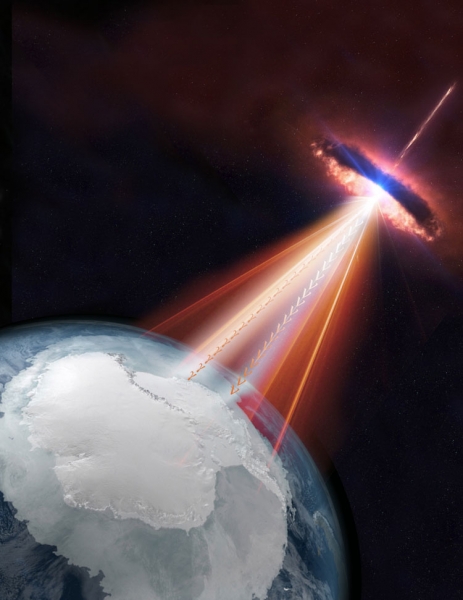IceCube Neutrinos Point to Long-Sought Cosmic Ray Accelerator

In this artistic rendering, a blazar emits both neutrinos and gamma rays that could be detected by the IceCube Neutrino Observatory as well as by other telescopes on Earth and in space. Credit: IceCube/NASA
By the IceCube Collaboration, 12 Jul 2018 10:00 AM
An international team of scientists has found the first evidence of a source of high-energy cosmic neutrinos, ghostly subatomic particles that can travel unhindered for billions of light years from the most extreme environments in the universe to Earth.
The observations, made by the IceCube Neutrino Observatory at the Amundsen–Scott South Pole Station and confirmed by telescopes around the globe and in Earth’s orbit, help resolve a more than a century-old riddle about what sends subatomic particles such as neutrinos and cosmic rays speeding through the universe.
Since they were first detected over one hundred years ago, cosmic rays—highly energetic particles that continuously rain down on Earth from space—have posed an enduring mystery: What creates and launches these particles across such vast distances? Where do they come from?
Because cosmic rays are charged particles, their paths cannot be traced directly back to their sources due to the powerful magnetic fields that fill space and warp their trajectories. But the powerful cosmic accelerators that produce them will also produce neutrinos. Neutrinos are uncharged particles, unaffected by even the most powerful magnetic field. Because they rarely interact with matter and have almost no mass—hence their sobriquet “ghost particle”—neutrinos travel nearly undisturbed from their accelerators, giving scientists an almost direct pointer to their source.
See full text